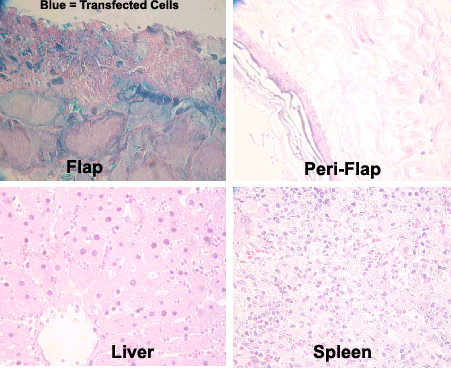Tuesday, November 5, 2002 - 3:02 PM
578
Targeted Gene Therapy Using Microvascular Tissue Transfer: Optimization of Transfection Parameters
The recent developments in gene therapy provide us with new modalities for delivery of therapeutic agents for treatment of many genetic and acquired disorders. Gene therapy methods utilizing viral vectors hold great clinical promise but have been thwarted by difficulties in developing targeted, high-level gene expression while limiting host toxicity. Our goal has been to maximize the delivery of the genetic material to the target tissue while minimizing systemic exposure. Recently, we created a unique method of gene delivery while avoiding problems associated with the use of viral vectors. We developed a rat free flap model, in which microvascular beds were transfected ex vivo, flushed and then re-attached to the native circulation using microvascular techniques. Adult Sprague-Dawley rats were transfected with adenovirus containing the B-gal reporter gene driven by the CMV promoter. We utilized two different flap models; Superior epigastric fasciocutaneous flap and quadriceps muscle flap. We studied the effect of viral load, dwell time, quantity and pressure of irrigation, and the type of the flap on the efficacy of transfection. Flaps were harvested on day five. Liver, lung, spleen, flap, and peri-flap specimens were examined for expression of the B-gal gene with ELISA, and tissue staining. High regional expression of B-gal gene in the flap was documented. We have been able to achieve high transfection rates in the desired tissue while minimizing expression outside the regional tissue. We have also found that the gene expression correlates directly with increasing viral load and dwell time. This technique represents a major advancement over currently utilized methods of gene delivery. It would be ideal for patients who require free tissue transfer following oncologic ablation to deliver high dose chemotherapeutics directly to the site of the neoplasm.
*First and second authors contributed equally to this work.

See more of Microsurgery
Back to 2002 Complete Scientific Program
Back to 2002 Meeting home
